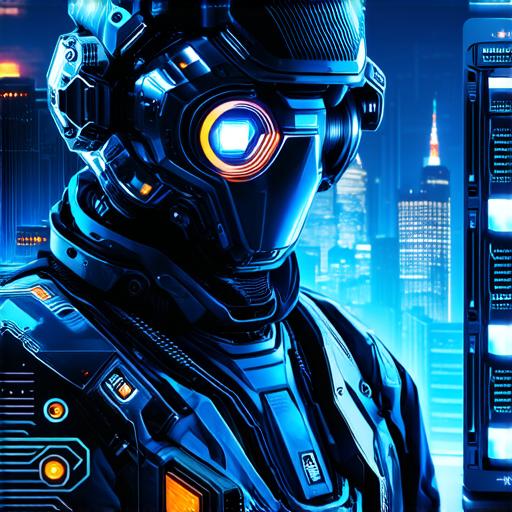
The Main Idea: Understanding Enemy AI in Unity 3D
Before we dive into the technicalities of creating enemy AI in Unity, it’s important to understand what it is and why it’s crucial for game development.
Enemy AI, also known as adversarial AI or opponent AI, refers to the programming of an artificial intelligence system to behave in a way that opposes or challenges another AI system or player. In the context of video games, enemy AI controls the behavior of enemies within the game world, such as enemies in first-person shooter games or enemies in strategy games.
The key to creating effective enemy AI is understanding how it works and what makes it successful. Enemy AI must be challenging enough to provide a good balance of difficulty for players, but not so difficult that it becomes frustrating or unbeatable.
The Art of Creating Enemy AI: Tips and Techniques
Now that we have an understanding of what enemy AI is and why it’s important, let’s dive into the technicalities of creating it in Unity 3D.
1. Define the Behavior of Your Enemies
To create effective enemy AI, you need to define the behavior of your enemies. This includes their movement patterns, attack strategies, and response to player actions. Defining the behavior of your enemies will help you create a challenging and engaging game experience.
2. Use Scripts to Control Enemy Behavior
Unity 3D provides a wide range of scripting options for creating enemy AI. The most commonly used scripts include NavMeshAgent, AnimatorController, and BehaviorTree. These scripts allow you to control the movement, animation, and decision-making of your enemies.
3. Implement Pathfinding Algorithms

Pathfinding algorithms are essential for enemy AI in Unity 3D. They help enemies navigate through the game world efficiently and effectively, avoiding obstacles and seeking out the player. The most commonly used pathfinding algorithms include A* and NavMesh Obstacle Carving.
4. Add Randomness to Enemy Behavior
To make your enemies more challenging and unpredictable, it’s important to add randomness to their behavior. This can include random attack patterns, movement speeds, and reaction times. Randomness helps keep the gameplay fresh and exciting, making it more engaging for players.
5. Test and Refine Your Enemy AI
Once you have implemented your enemy AI, it’s important to test and refine it thoroughly. Play through your game multiple times, observe how your enemies behave, and make adjustments as necessary. This will help you create a challenging and engaging game experience that keeps players coming back for more.
6. Use Machine Learning to Improve Enemy AI
Machine learning is a powerful tool that can be used to improve the behavior of your enemies in Unity 3D. By using machine learning algorithms, you can analyze player behavior and adjust enemy behavior accordingly, making them smarter and more challenging over time.
7. Collaborate with Other Developers
Creating effective enemy AI requires a deep understanding of the basics of enemy AI, a willingness to experiment and iterate, and a commitment to delivering an engaging and challenging game experience. With these tips and techniques, you can create effective and exciting enemy AI that will keep your players engaged for hours on end.
FAQs:
1. What is the difference between enemy AI and non-player character (NPC) AI?
Enemy AI specifically refers to the programming of an artificial intelligence system to behave in a way that opposes or challenges another player, while NPC AI controls the behavior of any non-player characters within the game world, including enemies, allies, and other characters.
2. How do I make sure my enemy AI is challenging but not frustrating?
To ensure your enemy AI is challenging but not frustrating, it’s important to balance the difficulty level with player progression. As players progress through the game, they should be able to overcome increasingly difficult enemies. Additionally, it’s important to provide feedback to the player on their progress and allow them to adapt their strategies accordingly.
3. What are some common mistakes to avoid when creating enemy AI?
Some common mistakes to avoid when creating enemy AI include making enemies too predictable or easy to defeat, over-relying on brute force attacks, and not providing enough variety in enemy behavior. Additionally, it’s important to ensure that the player’s progression is appropriately balanced with the difficulty of the enemies they encounter.
4. How can I use data analytics to improve my enemy AI?
Data analytics can be used to gather information on player behavior and adjust enemy behavior accordingly. For example, you could analyze data on how players defeat enemies and use that information to modify enemy strategies or tactics to make them more challenging. Additionally, machine learning algorithms can be trained using data analytics to improve the accuracy and effectiveness of enemy AI over time.
5. What are some resources available for learning more about creating effective enemy AI in Unity 3D?
There are many resources available for learning more about creating effective enemy AI in Unity 3D, including tutorials, video courses, and online communities focused on game development. Additionally, attending game development conferences and meetups can provide valuable networking opportunities and access to industry experts.

